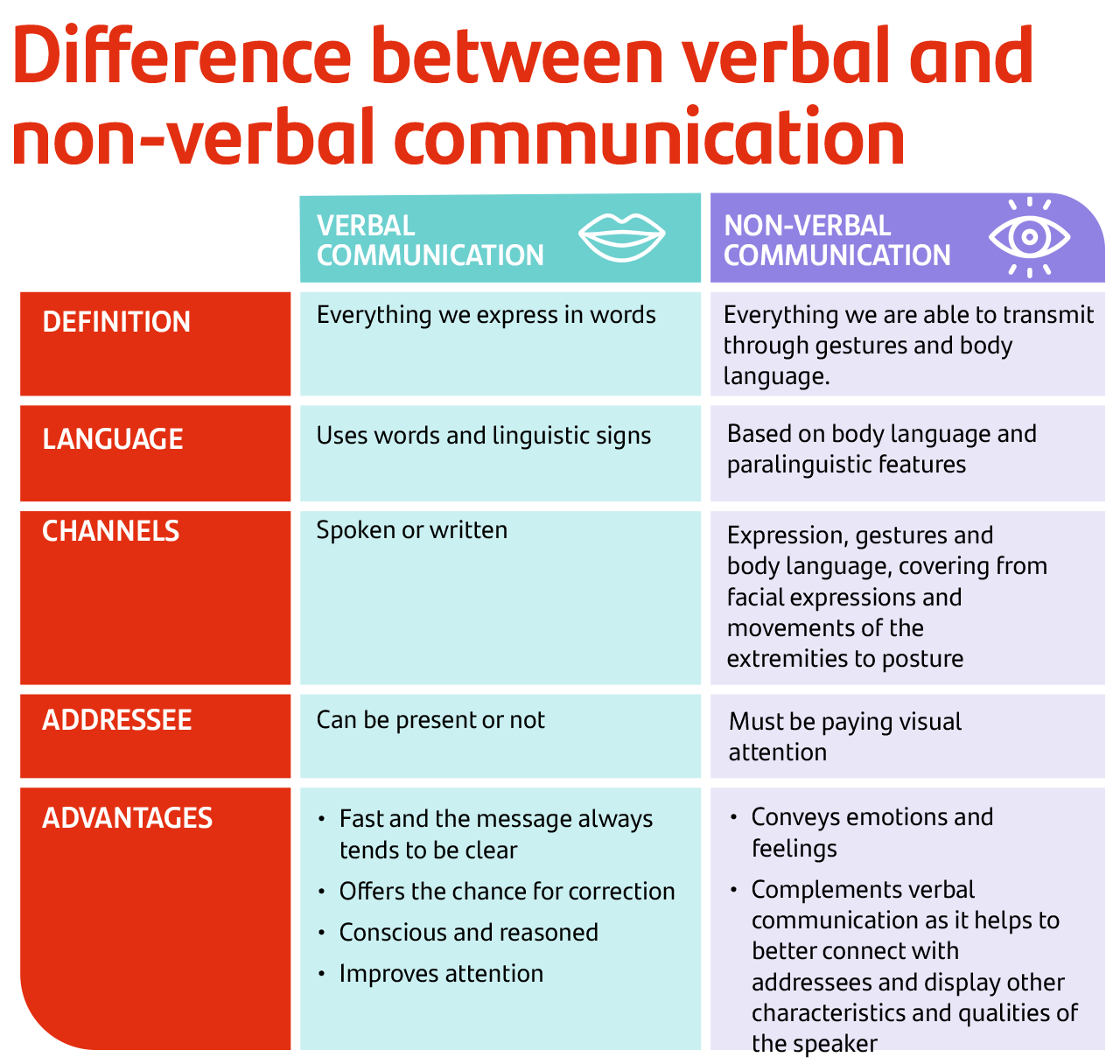Verbal and non-verbal communication in female leadership
Do you know what the former German chancellor Angela Merkel, the former Prime Minister of New Zealand, Jacinda Ardern, and the current President of the European Central Bank (ECB), Christine Lagarde all have in common? Besides being some of the most influential leaders in the world, they also have excellent verbal and non-verbal communication skills. It's thanks to these skills that they have been able to raise their voices and promote female leadership in the way they have.
Knowing how to transmit a message using not only the most appropriate words but also body language is of supreme importance when it comes to positions of major responsibility, in which the way a person communicates can prove a key factor for the addressees and may even affect their decision-making. Want to know the difference between verbal and non-verbal communication and how they can influence the message you want to get across? We explain all below, with examples you're sure to be familiar with.
What is verbal and non-verbal communication?
Verbal communication means everything we express through words, while non-verbal communication is the information we convey through our gestures and body language. Although it may not seem so, according to research conducted by the anthropologist Albert Mehrabian, words only account for 7% of communication, while some 55% comes from body language (the movements and posture of the body), with the remaining 38% of the impact stemming from paraverbal communication (such as tone of voice).
The importance of non-verbal communication is so far-reaching that it can even change how an entire conversation is perceived, as demonstrated by the first ever televised debate. On 26 September 1960, John F. Kennedy and Richard Nixon debated for what would be the first time ever on American television. Those who watched it on TV pronounced Kennedy the winner, while those who listened to it on the radio proclaimed the winner had been Nixon.
The reality was that Nixon wouldn't agree to using make-up, and his face was so pale in front of the cameras that he looked ill. Meanwhile, Kennedy carefully tended to his image and this gave him an edge from the very start, thanks also to his body language which conveyed confidence and calm.
Likewise, the most recent change of presidency in the United States is another clear example of the importance of non-verbal communication, as explained in Non-verbal analysis: Joe Biden's most heartfelt moment in his first speech as president. This analysis demonstrates that Biden projects peace and tranquillity through his soothing body language.

Three examples of great communicators
As we said at the start of this article, some of the most influential leaders - such as Angela Merkel, Jacinda Ardern and Christine Lagarde - have one thing in common: they've shown themselves to be masters of verbal and non-verbal communication in a broad range of situations. Although each of them has a different style, they are three clear examples of female leadership.
Angela Merkel: 16 years of leadership
The former German chancellor Angela Merkel has become one of the most influential women in recent history. Stepping down after 16 years of leadership, she leaves her post following a remarkable career - not only in Germany, but also in Europe, which has seen her come to be considered by many as the leader of the whole continent in recent years.
Her verbal and non-verbal communication skills have played a major role in her leadership image. Her strength, tenacity and confidence are some of her best-known traits. Moreover, her neutrality and clarity when it comes to conveying her ideas, as well as a rigid posture, help to reinforce her leadership role in a forceful way.
Her calm and unhurried speech, together with matching body language, helped her earn the trust of German voters time and again, because in her, they saw a politician who was confident in her decisions and who seemed to be sure of the right path for national interests.
Jacinda Ardern: An example of emotional intelligence
New Zealand's former Prime Minister Jacinda Ardern is another clear example of what a leader in the 21st century should be like. Throughout the coronavirus crisis, she once again demonstrated her political capabilities. Jacinda implemented measures such as reducing her salary by up to 20%, while she was also the first to set an example on complying with the strict measures imposed to combat Covid-19. These gestures made her stand out as one of the best international leaders of the moment, together with her speeches focused on togetherness and empathy as well as her mastery of non-verbal communication.
Her fresh, modern style steps away from traditional political speeches, bringing her closer to the people on the street and allowing her to gain their trust. She comes across as natural, unabashed and, when necessary, she isn't afraid to show her vulnerable, human side to others.
Her message is relatable and packed with emotional intelligence, portraying herself as firmer or more sympathetic as circumstances require. The New Zealand former Prime Minister exhibits her full mastery of modern leadership techniques: honesty, transparency, decisive action and open non-verbal communication that helps convey her message to everyone.
Christine Lagarde: the power of charisma
Christine Lagarde is one of the 21st century’s most compelling examples of female leadership. Following her tenure as the first female managing director of the International Monetary Fund (IMF) in 2011, she took on a new challenge as the first female President of the European Central Bank (ECB): uniting an ECB that was totally divided - a feat she has achieved thanks to her calm disposition and charisma.
"Grit your teeth and smile” is one of Lagarde's most popular quotes. She learned to do exactly this back when she practised synchronised swimming, and it clearly left its mark on her attitude. Some of her most deep-rooted values are conviction, commitment and discipline, which she transmits in every one of her speeches.
Another characteristic of her non-verbal communication is her well-groomed image, which conveys powerful charisma. This, together with her determination, means even the most difficult economic decisions are understood and accepted, thanks to the confidence she channels.

What is non-verbal communication?
While there is a difference between verbal and non-verbal communication, they are completely complementary: both feed into one another to give any message a broader and more accessible meaning. However, as has been shown, non-verbal communication has a greater influence than many people realise.
That's why people in positions of major responsibility or who are leaders at any organisation need a good command of both types of communication. Considering that anything communicated via body language will have a direct effect on what is expressed verbally, and taking into account that communication is an essential factor at any organisation, then it becomes vital to know how to connect with those we are addressing, in all areas, to achieve effective and barrier-free communications and secure the desired results.
Do you want to develop professional skills that will help you access better job opportunities? Discover Santander Open Academy, the training space you need to keep growing.
Join our global platform for learning and professional development and access courses at zero cost, training content in a wide range of formats and scholarships from leading universities and institutions.
If, like us, you believe that we should never stop learning, sign up here and find out what we have for you!
More posts to read...
-
 12/04/2024 | Santander Universidades
12/04/2024 | Santander UniversidadesGrowth mindset: examples in the workplace to develop the right attitude toward challenges
Card text -
 01/03/2024 | Santander Universidades
01/03/2024 | Santander UniversidadesThe sandwich technique: how to deliver criticism in an assertive way
Card text

